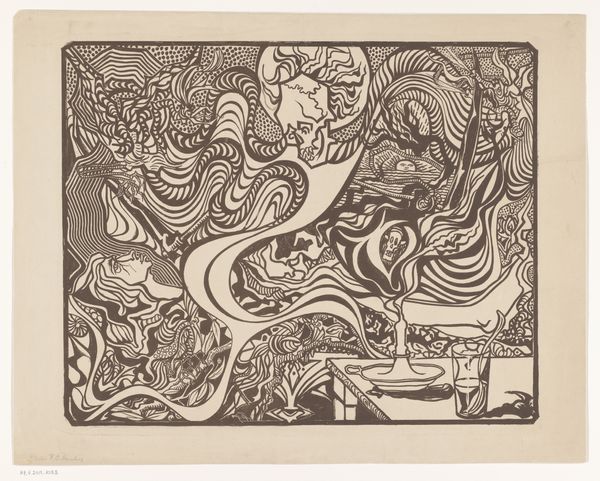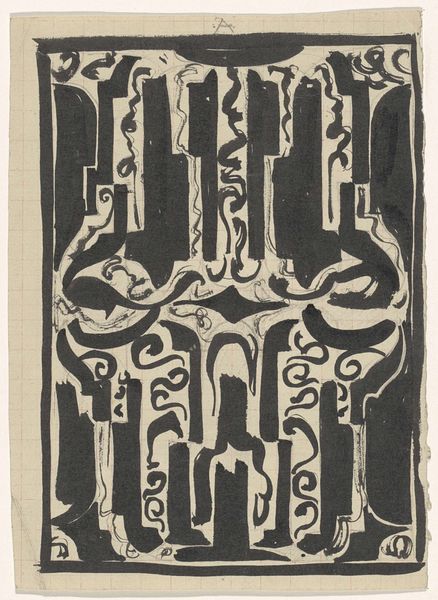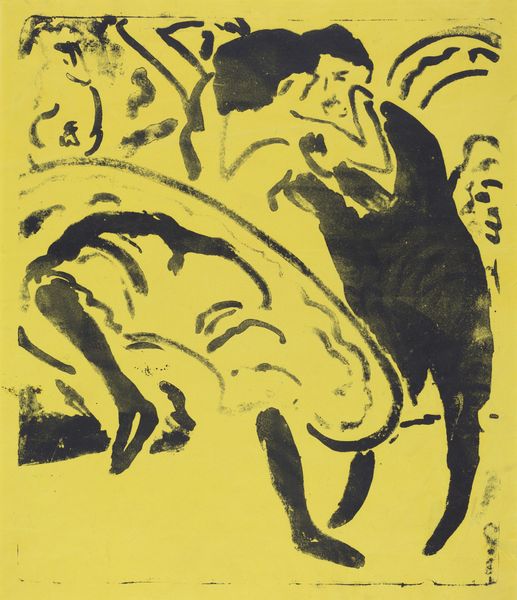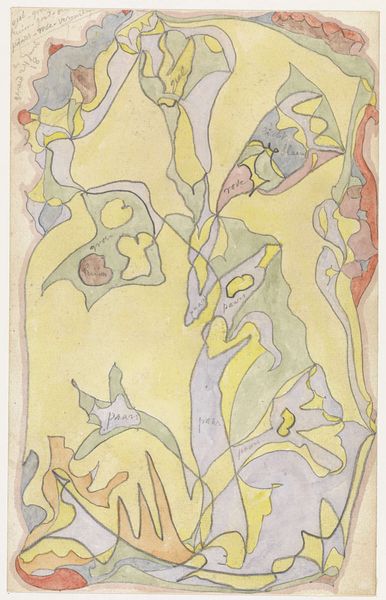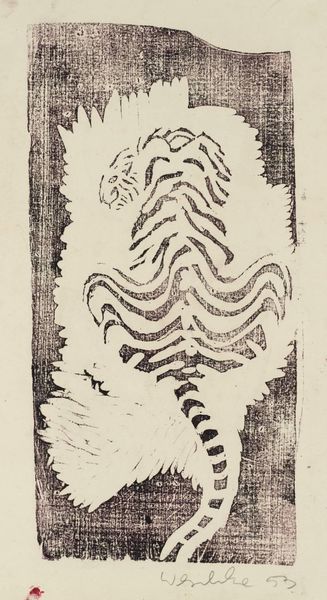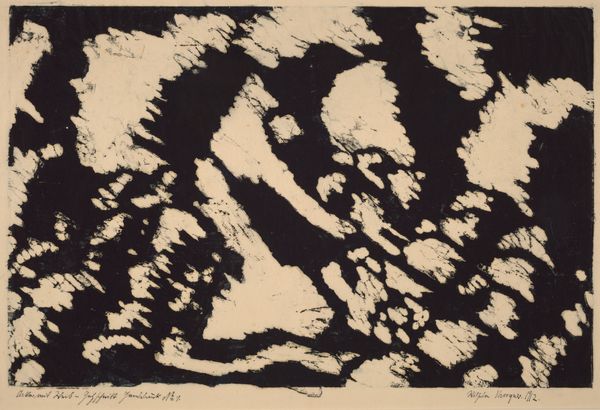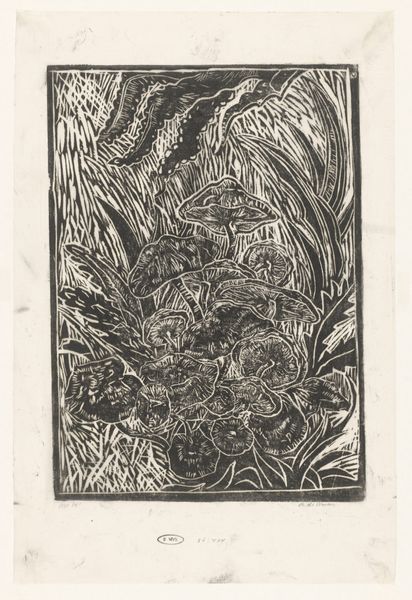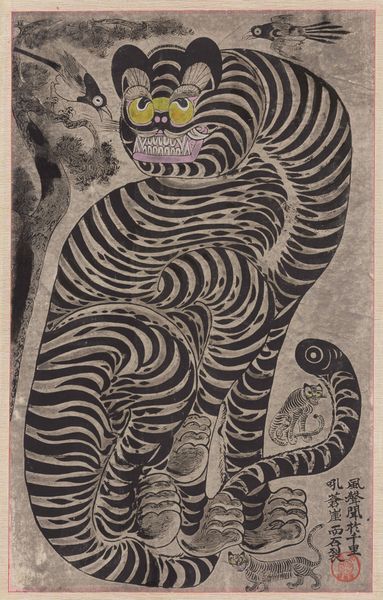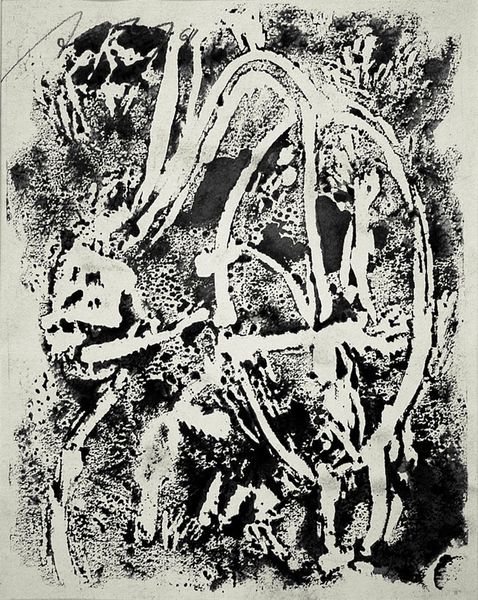
color-lithograph, print, woodcut
#
art-nouveau
#
animal
#
color-lithograph
# print
#
landscape
#
figuration
#
linocut print
#
woodcut
#
france
#
symbolism
Dimensions: 14 3/8 x 11 1/4 in. (36.51 x 28.58 cm) (image)
Copyright: Public Domain
Paul Ranson created "Tiger in the Jungle" as a color lithograph, a printmaking technique that allows for flat planes of color. Ranson was one of the founders of Les Nabis, a group of Post-Impressionist avant-garde artists who embraced spirituality, symbolism and decorative qualities in their art. Here, the tiger embodies a symbol of untamed nature, evoking both fascination and fear. Ranson lived in a time of rapid social change and a growing interest in non-Western cultures. The exotic "jungle" setting reflects a European fascination with the "Orient," filtered through the lens of colonialism. The flattened perspective and bold colors create a dreamlike quality that invites us to explore the boundaries between reality and imagination, and between the human and natural worlds. This lithograph urges us to consider our own relationship to the wild, both within ourselves and in the world around us.
Comments
minneapolisinstituteofart about 2 years ago
⋮
André Marty announced his farsighted agenda for L'Estampe originale from the outset when he devoted most of the first album, in 1893, to the Nabis, the Hebrew word for "prophet." These idealistic young artists first exhibited together in 1891. They met Saturdays in Paul Ranson's Paris studio to discuss, over beer and tea, new ways of representation. The Nabis were given to flat forms and expressive decoration, with meditative or mystical undercurrents. Coalesced in Ranson's tiger are the sinuous lines of Art Nouveau, the strong contours of Japanese woodcuts, and the antics of puppetry (Ranson kept a puppet theater in his studio). Ranson was also known to weave references to numerology and the occult into his works; the number five, he learned, represented sentient beings. The tiger pouncing amid the five irises could thus symbolize the relationship of nature to human intelligence.
Join the conversation
Join millions of artists and users on Artera today and experience the ultimate creative platform.
